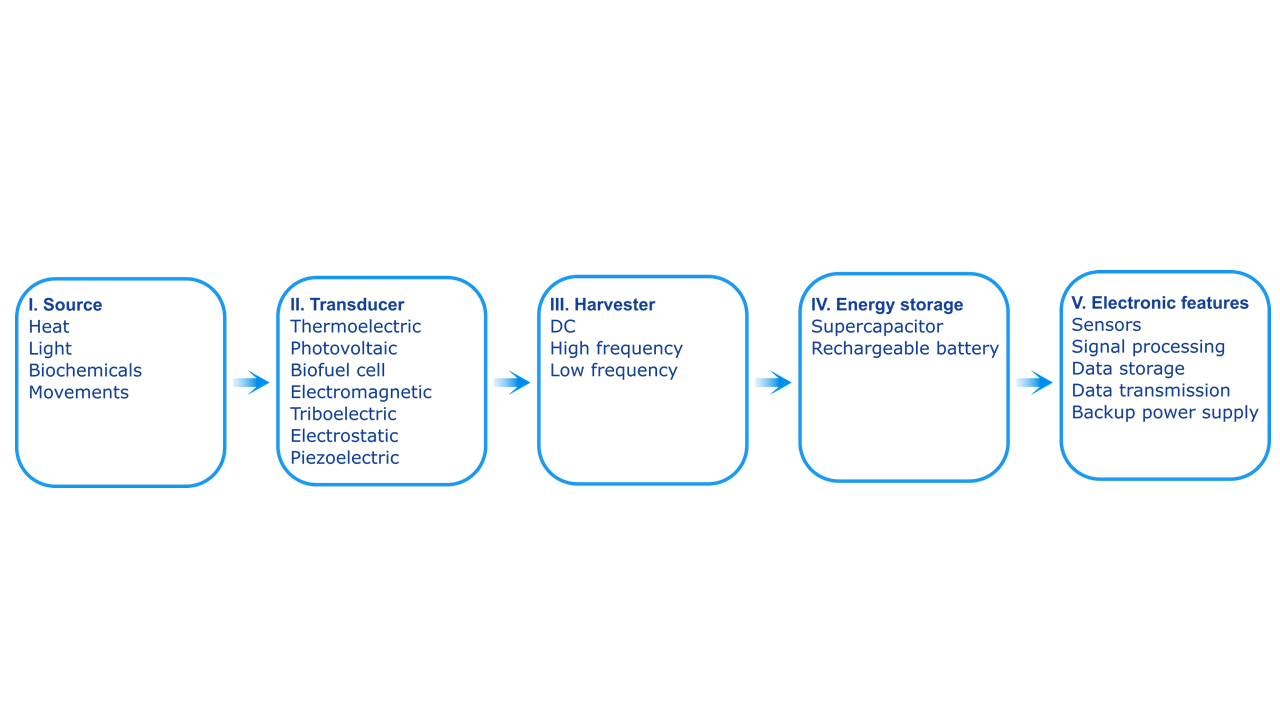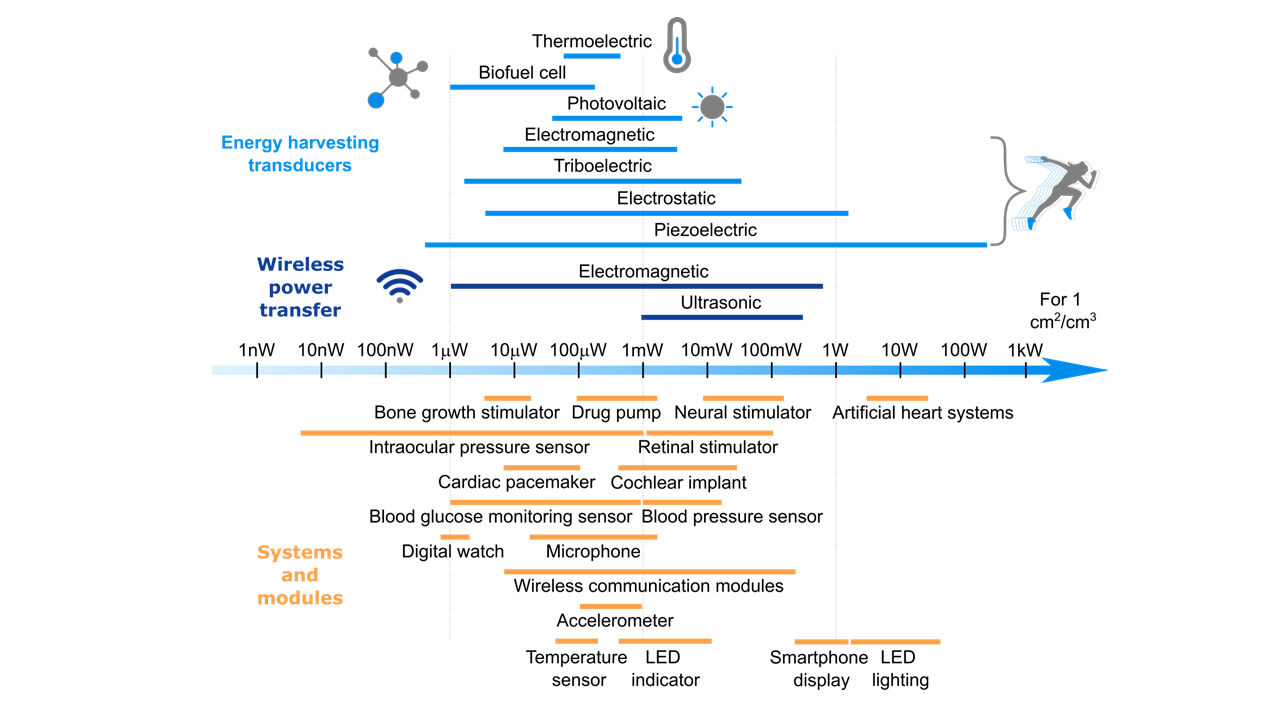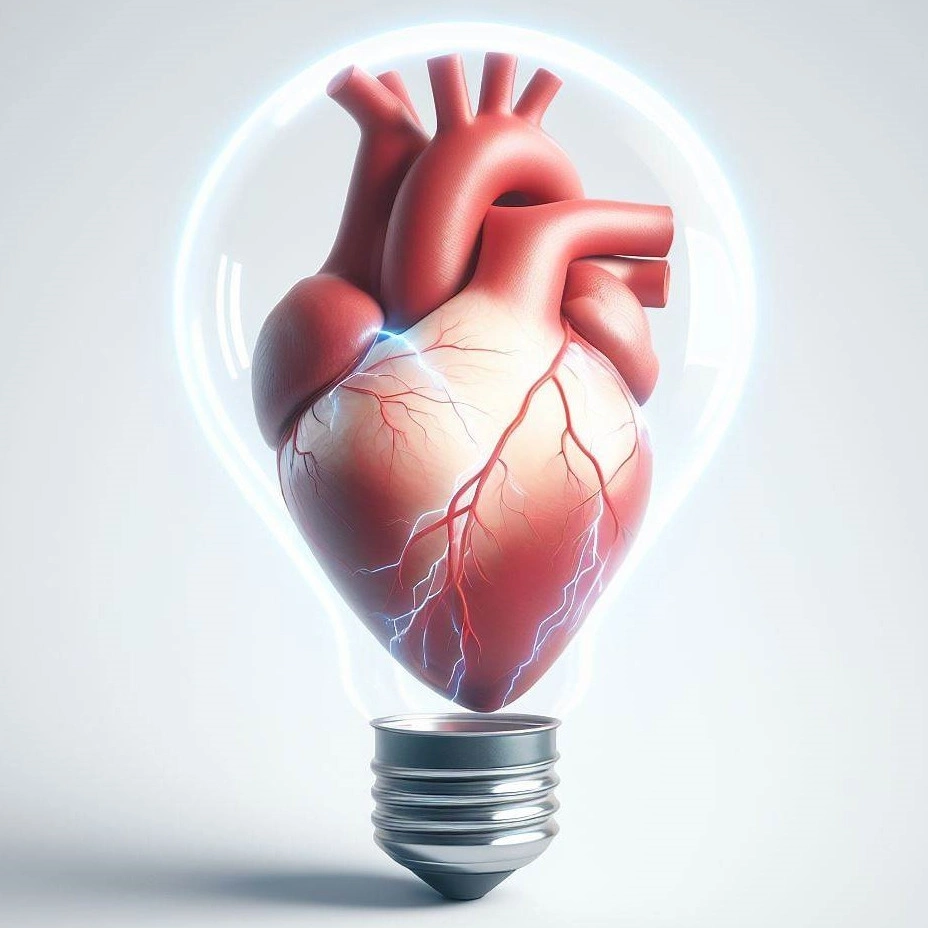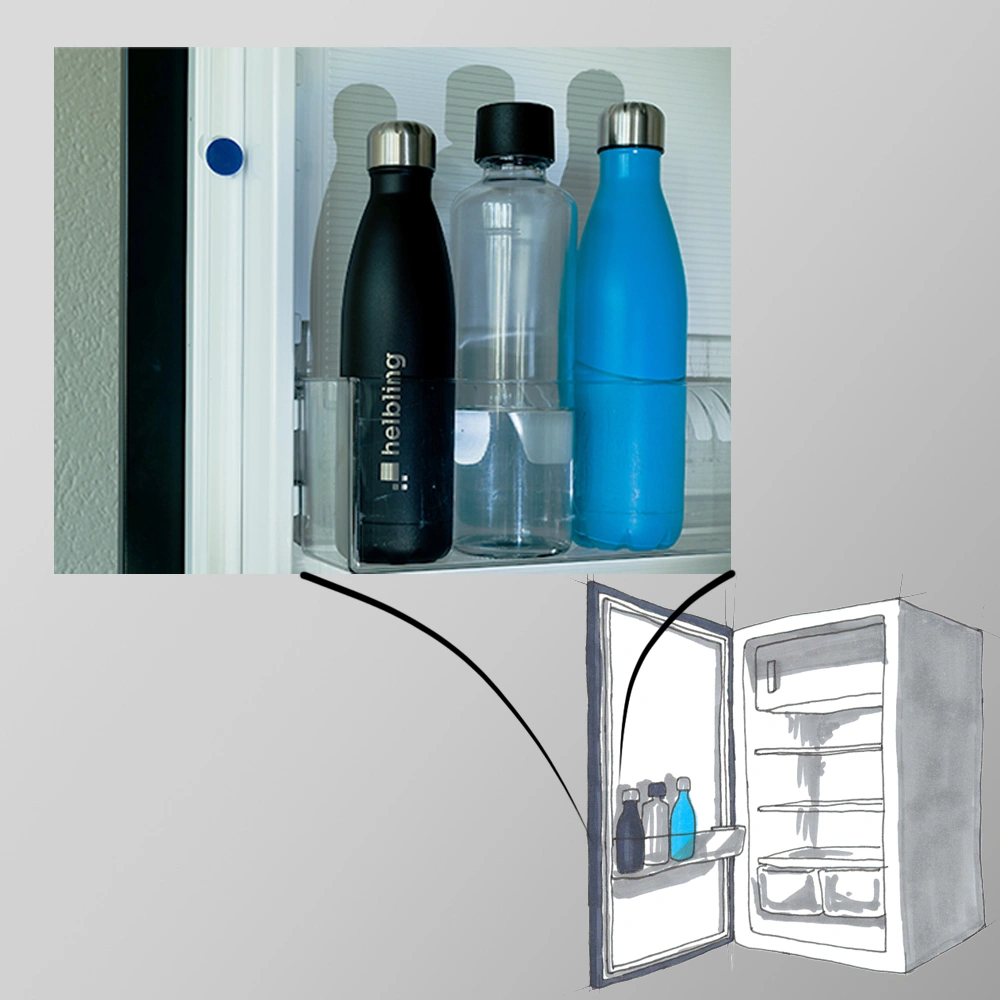Industries
Technologies
Health and energy figure among the top challenges of our time, not least according to the Sustainable Development Goals identified by the United Nations. Technology will be a major driver of attempts to develop solutions to these challenges, including the domain of energy harvesting for medical devices, which combines both. Energy harvesting solutions promise to enable self-powered wearables and active implants. Moreover, they harbor the potential to become cornerstones of sensor networks used in live adaptive systems powered by data science. As an innovation firm, Helbling has continuously expanded its expertise in this domain and pursues a systems engineering approach for the implementation of such solutions. There is likewise a focus on technologies that could potentially be used in connection with IoT and MedTech applications.
Energy harvesting is the process by which energy is captured from a system environment and converted into usable electricity to power the selfsame system. In fact, the Swiss industry boasts longstanding expertise in this domain with automatic mechanical watches powered by the movement of the wrist. Calculators, dynamo lights, and RFID tags constitute other examples of consumer products powered by energy-harvesting technology that have been around for some time already. In MedTech, devices such as continuous glucose monitoring systems and implantable cardiac stimulators require a steady and reliable power supply to operate. Batteries are frequently the solution of choice for this. Nevertheless, they require recharging or even battery replacement surgery every three to ten years, which impairs the user experience. In critical applications, hybrid energy harvesting solutions currently aim to increase battery lifetime, thus reducing surgeries, medical risks, and the costs for the healthcare system. However, in the future, energy harvesting solutions could replace batteries and enable smaller implants for treatment and diagnostics. With this appealing prospect in mind, Helbling has already supported companies in their efforts to implement energy harvesting technology in their systems. For example, in addition to wireless power transfer solutions, Helbling has also conducted projects in the area of energy harvesting, which focus on aspects such as dataloggers for aviation through to wearables and drug delivery systems.
A systems engineering approach breaks down the development process
Implementing an energy harvesting solution requires a holistic analysis of the system, its requirements, its functions, and its use cases. The development is broken down into five aspects, which are presented in Figure 1. The analysis of the functions and of the power budget of the system (V) is the first phase to complete. (How much power per functionality? How frequently? How long?) Then, analyzing the use scenarios will allow for identifying the power sources in the environment of the device (I): light, heat, movements, biochemicals, or others. Moreover, measuring their intensity in real conditions is recommended. Tackling the development from these angles will help to assess the feasibility of the solution and fine-tune it before committing resources to any lab work.

Technological solutions come into play in another phase, in which the transducers used to convert the source power into electricity are examined (II): photovoltaic cells draw power from light, thermoelectric generators from heat, and electrodes from biochemicals, whereas electromagnetic, triboelectric, electrostatic, and piezoelectric generators convert mechanical energy. Besides energy harvesting, antennas and some above-mentioned transducers also enable wireless electromagnetic and ultrasonic power transfer when a powering system is located nearby. Transducers for energy harvesting and energy transfer meet the power budget of wearable and implantable systems in Figure 2. Thus, it shows that multiple solutions exist for powering autonomous mobile sensors and systems for health management.
Because the transduced electrical power is rarely stable over the use scenarios, designing a harvester circuit is essential to reliably power the electronics that achieve the functionalities of the system reliably (III). Many architectures exist and benefit from the integrated harvester circuits that have spread with the advent of the Internet of Things (IoT). They allow for combining multiple transducers and managing the power source between the instantaneously transduced power and batteries for energy storage (IV). At this point of the development, it is recommended to validate the identified solution for the use case with off-the-shelf transducers and harvesters. Once the right technologies are identified, project-specific solutions will likely need to be developed and manufactured due to the fact that one-size-fits-all transducers do not tend to exist.

Research offers a glimpse at the applications of tomorrow
Research activities are in full swing with regard to energy harvesting technologies for medical devices, with many promising technologies seemingly just around the corner. In this context, inductive and radiofrequency power transfer were demonstrated for applications ranging from epi-retinal prosthesis [1] to pressure sensors in contact lenses [2]. Moreover, triboelectric nanogenerators (11 uW/cm^2 [3]) and subdermal photovoltaic cells (4-1963 uW/cm^2 [4]) also allowed for powering cardiac pacemakers. Finally, in 2023, researchers from ETH Zurich reported an implantable artificial insulin pump powered by glucose in the body (0.45 mW/cm^2 [5]). In fact, the implementation of energy harvesting solutions is where research meets development – and it is also where Helbling and its network of partners are positioned for driving this technology transfer in relation to MedTech innovations.
Summary: A clear roadmap and multidisciplinary skills support the development of self-powered devices
Energy harvesting solutions will enable continuous diagnostic and therapeutic medical devices. They will also facilitate smart sensor networks for consumer products, large-scale industrial applications and even climate monitoring. The breakdown of the development process highlighted the need for a multidisciplinary skillset and a systemic approach. In fact, over the course of its 60 years of experience, Helbling has continuously refined its development methods that proved effective for leading successful innovation projects. So, where can energy harvesting solutions be expected in the future? Although nobody knows for sure just yet, there will be no shortage of applications. Helbling is ready to support its clients in shaping these solutions.
Authors: Joan Teixidor, Stefan Bauer
Main Image: Bing Image Creator
References
[1] Roy et al., Powering Solutions for Biomedical Sensors and Implants Inside the Human Body: A Comprehensive Review on Energy Harvesting Units, Energy Storage, and Wireless Power Transfer Techniques. IEEE Transactions on Power Electronics, vol. 37, no. 10, 2022 https://www.doi.org/10.1109/TPEL.2022.3164890
[2] SENSIMED Triggerfish, Sensimed SA, https://www.sensimed.ch/sensimed-triggerfish/ (consulted on 12.08.2023, 14:47)
[3] Ouyang et al., Symbiotic cardiac pacemaker. Nat Commun, vol. 10, no. 1821, 2019, http://doi.org/10.1038/s41467-019-09851-1
[4] Haeberlin et al., The first batteryless, solar-powered cardiac pacemaker. Heart Rhythm, vol. 12 issue 6, 2015, https://doi.org/10.1016/j.hrthm.2015.02.032
[5] Maity et al., Blood-Glucose-Powered Metabolic Fuel Cell for Self-Sufficient Bioelectronics. Adv. Mater, vol. 35, issue 21, 2023, https://doi.org/10.1002/adma.202300890
[6] Gljušćić et al., Kinetic Energy Harvesting for Wearable Medical Sensors. Sensors, vol. 19, no. 22, 2019, https://doi.org/10.3390/s19224922
[7] Yahya Alkhalaf et al., Self-Sustainable Biomedical Devices Powered by RF Energy: A Review. Sensors, vol. 22, no. 17, 2022, https://doi.org/10.3390/s22176371
[8] Lorandt Fölkel, The Reality about Energy Harvesting, Würth Elektronik, 2018




